Selling on Amazon may appear to be the easy road to riches, but the truth is far from it.
While some sellers do become incredibly profitable, others find themselves struggling to turn a profit. High fees, rising competition, pricey advertising, and shifting algorithms make big obstacles that can suck profits away before sellers even know what’s happening.
Based on Jungle Scout, 50% of new Amazon sellers only generate less than $5,000 in overall sales, and 26% of them never break even. On top of that, the fees of Amazon could account for as much as 30-45% of overall revenue, limiting sellers’ ability to enjoy nice margins. If you have been thinking why your Amazon business is not pulling in the profits it should, this post will explain the main reasons that sellers lose money and how to correct those problems.
The Hard Truth About Selling on Amazon
Most potential Amazon sellers are attracted to the site after hearing about influencers and YouTubers boasting about million-dollar revenue screenshots. What everyone fails to understand, though, is the fact that profit and revenue are two things that cannot be compared. While sales are easier said than done, retaining most of that revenue as profit is an entirely different challenge.
Amazon selling is very competitive, and profit margins are frequently much tighter than anticipated. Gross revenue may appear to be very high, but sellers need to factor in numerous costs such as fees, advertising, returns, and logistics. Consequently, a lot of Amazon businesses make only 10-15% net profit margins, and some barely manage to break even.
Why Amazon Sellers Are Losing Money
Amazon’s marketplace presents enormous opportunity, but for many sellers, it’s a profit-devouring machine. The main culprit? A relentless fee structure that erodes earnings, frequently leaving sellers in the red. Here’s a breakdown of why Amazon sellers are losing money—and how the numbers add up.
1. Fee Overload: Amazon’s Big Cut
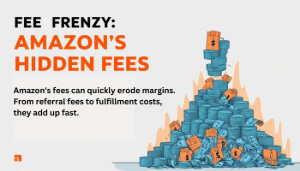
Amazon selling may appear simple, but there is a complex maze of fees that can quietly take profit. Far too many sellers find these costs underestimated until they are in too deep. Let’s break down the main offenders:
Referral Fees: Amazon collects a commission on each sale, between 8% and 15% based on the product group. A $25 item in a 15% category? That’s $3.75 down before you blink.
Fulfillment Fees: Choosing Fulfillment by Amazon (FBA) means Amazon stores, picks, packs, and ships—but it costs. The fees are tiered by weight and size, surging more for heavy or large items. For that $25 item, plan on about $6.00 in FBA fees.
Long-Term Storage Charges: Have inventory lingering in Amazon warehouses for too long? They’ll charge you extra—sometimes $6.90 per cubic foot or more after 365 days—eating into margins on slow-moving stock.
Returns & Refunds: Amazon’s return policy is a customer delight but a seller’s bane. Returns are common, and sellers end up paying for restocking or absorbing losses on non-salable items. Set aside $1.50 per sale for this, on average.
Advertising Charges: With millions of items competing for notice, exposure is expensive. Pay-Per-Click (PPC) advertising is a necessity for the majority of vendors, but a poorly optimized campaign can consume 20-50% of earnings. A humble $5.00 advertisement spend per sale isn’t out of the ordinary.
The Math Reveals the Truth
Consider that $25 item as an example:
$3.75 (15% referral fee)
$6.00 (FBA fulfillment fee
$5.00 (PPC advertisement spend)
$1.50 (returns/refunds)
$1.25 (storage and miscellaneous fees)
Total fees: $17.50. That leaves $7.50 in profit—before deducting the cost of goods sold (COGS), such as manufacturing or shipping to Amazon’s warehouses. If COGS is $8.00, the seller’s at a $0.50 loss per sale. Scale that up, and the red ink flows quickly.
2.Higher Cost of Advertising Makes Selling Unprofitable
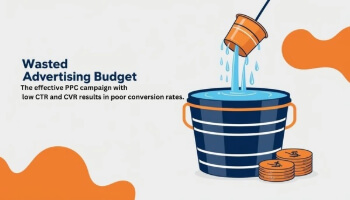
Amazon’s pay-to-play strategy previously made advertising accessible, but PPC prices have skyrocketed—increasing more than 30% in two years. Sellers can’t get seen without ads, but astronomical cost-per-click (CPC) is rendering profitability unattainable. At $1.50 per click with a poor conversion rate, losses add up quickly—particularly for sellers who manage campaigns poorly or neglect listing optimization.
Most sellers waste money on ads without decent images, keyword-optimized titles, and interesting descriptions, sinking conversions. To make it, sellers need to optimize listings in the first place, then monitor metrics such as Advertising Cost of Sales (ACoS) and Total Advertising Cost of Sales (TACoS) to make sure ads drive—not drain—profits.
3.Brutal Competition and Price Wars
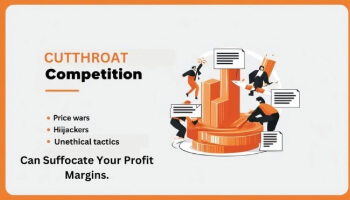
Amazon boasts millions of sellers, and with so many competing products, price wars are epidemic. Many new sellers enter the market and price slash in an attempt to win the Buy Box, but this strategy often leads to razor-thin margins or even losses.
Chinese brands and direct-to-consumer companies have also taken over Amazon, selling at rock-bottom prices that most merchants cannot compete with. Some merchants also employ black-hat tactics such as fake negative reviews or false IP complaints to sabotage competitors, making it even harder to stay profitable.
Rather than price wars, savvy sellers focus on:
Brand Differentiation: Offering unique value propositions, e.g., bundling products or offering better packaging.
Premium Branding: Spending on high-quality product photography, A+ Content, and great storytelling to support higher prices.
Off-Amazon Audience Building: Driving off-Amazon traffic through social media, influencer marketing, and email lists to decrease dependence on Amazon’s ad platform..
4.Shortage of Information about Amazon’s Algorithm
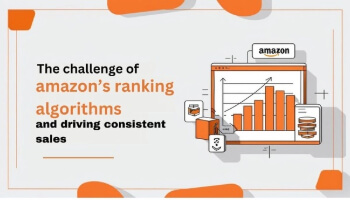
Amazon’s A9 and A10 algorithms are responsible for ranking the products to display at the top of search results, but not many sellers have a clue about how these ranking tools work. Simply listing an item with plenty of keywords and good photos is insufficient to guarantee visibility.
Amazon’s ranking algorithm considers many factors such as:
Conversion Rate (CVR)– Number of visitors who buy the product when they view the listing.
Click-Through Rate (CTR) – Number of people who click on the product when they see it in search results.
Sales Velocity – The rate at which a product is selling compared to others.
Customer Reviews & Ratings – Listings with higher rated and more positive reviews rank higher.
Vendors who are not actively working on optimizing their listings, examining their conversion rates, and experimenting with different pricing strategies will struggle to sustain high ranks and visibility.
Leaning on Old Strategies That No Longer Apply
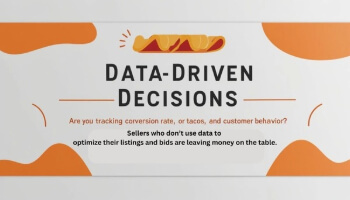
Amazon is always changing, and what was successful in 2018 or 2020 might not be successful in 2025. Sellers who don’t evolve with new trends and algorithm changes risk being left behind.
Some old strategies that no longer apply are:
Launching products blindly without adequate keyword research
Applying black-hat strategies such as fake reviews (Amazon is putting the kibosh on this!)
Overlooking outside traffic and depending solely on Amazon’s search engine
Running and forgetting PPC campaigns without continuous optimization
Successful sellers continually experiment with new tactics, observe market trends, and adjust their strategy to remain competitive.
How Sellers Can Stay Profitable on Amazon
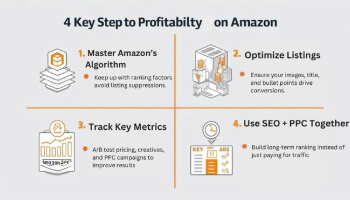
While these challenges do exist, with the right approach, it is still possible to build a very profitable Amazon business. To become more profitable, sellers must:
Master Amazon’s Algorithm: Understand product rankings and optimize listings accordingly based on that.
Optimize Click-Through Rate (CTR): Use good main images, A+ Content, and pricing strategies in order to receive more clicks.
Improve Conversion Rate (CVR): Improve bullet points, descriptions, and reviews to convert higher percentages of visitors into buyers.
Use Data-Driven Decisions: Track performance indicators like ACoS, TACoS, and conversion rates frequently to make changes accordingly.
Leverage External Traffic: Drive sales through social media, influencers, and paid campaigns outside of Amazon.
Final Thoughts
Amazon selling is not always the goldmine that everybody anticipates, but with the right strategy, it can still be very profitable. The key is to stay in touch, optimize your operation, and always adjust to the ever-changing marketplace. If you’re losing money, today is the day to audit your numbers, tighten up your strategies, and make the adjustments you have to get back in the black.
Are you going through any of these problems? Do let us know in the comments!

